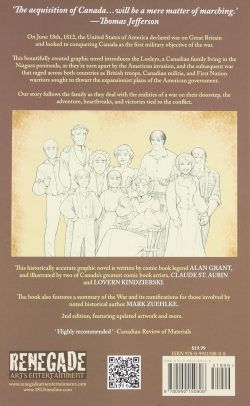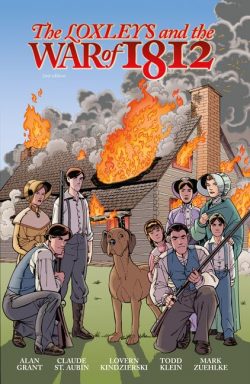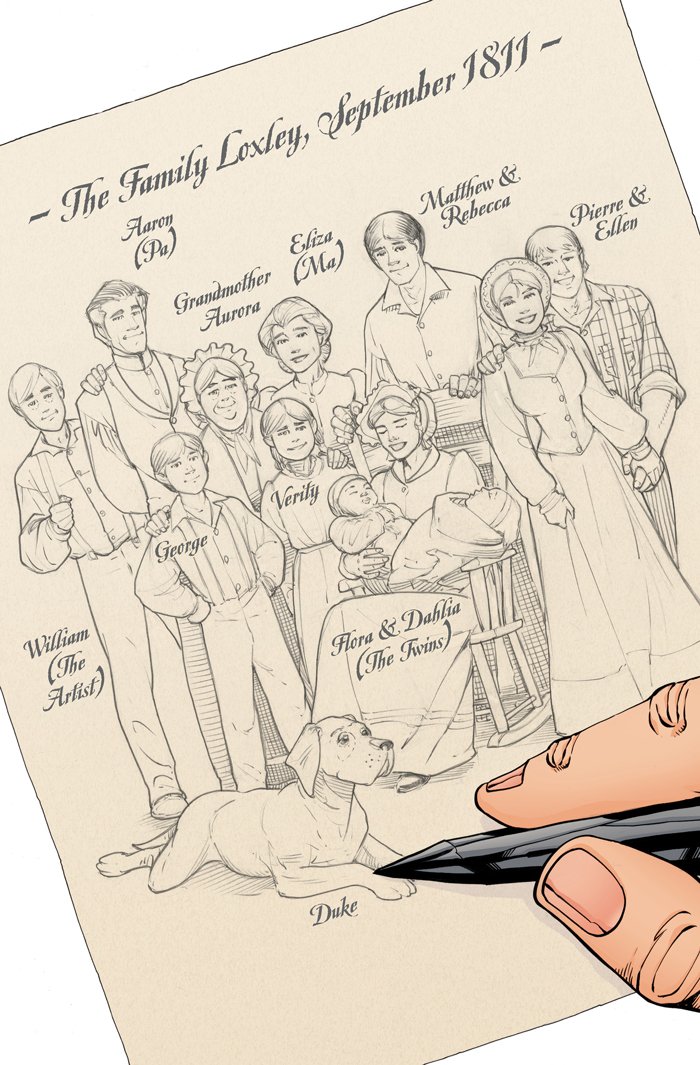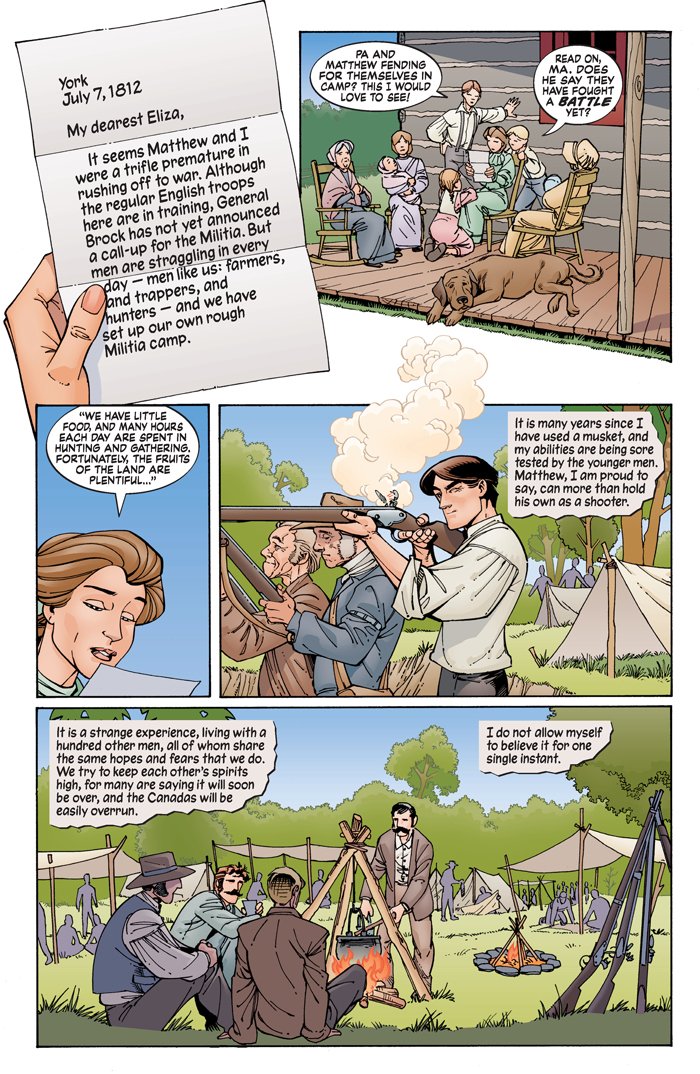
By Charles Chilton, Jack Daniel, Frank Humphris & various (Hawk Books)
ISBN: 978-0948248276 (Tabloid TPB)
This book includes Discriminatory Content produced in less enlightened times
Launching on April 14th 1950 and running until April 26th 1969, Eagle was the most influential comic of post-war Britain, and possibly ever. It was the brainchild of a Southport vicar, the Reverend Marcus Morris, who was increasingly concerned about the detrimental effects of American comic-books on British children and wanted a good, solid, middle-class Christian antidote. Seeking out like-minded creators, Morris peddled a dummy edition around British publishers for over a year with little success until he found an unlikely home at Hulton Press: a company specialising in general interest magazines like Lilliput and Picture Post.
The result was a massive hit which rapidly spawned age and gender-specific clones Swift, Robin and Girl: targeting other key demographic sectors of the highly lucrative and scrupulously demarcated children’s market. Thanks to printing wizardry, all of these weeklies combined sections of spectacular and lush full-colour pages with cheaper monochrome inserts offering line, wash and tone offerings.
A huge number of soon-to-be prominent creative figures worked on the key weekly, and although Dan Dare is deservedly revered as the star, the other strips (and features!) were almost as popular at the time. Many rivalled the lead in quality and entertainment value according to broader tastes of that hope-filled, luxury-rationed, fresh-faced generation. Eagle’s mighty pantheon roped in established radio and film attractions like P.C. 49, soon-to-be TV sensation Captain Pugwash, and more, all already or swiftly becoming stars of other media and guaranteed their own share of promotional tie-ins like books, puzzles, toys, games, apparel and comestibles as well as and all other sorts of ancillary merchandising. And because everyone else did, they also had a cowboy. Deriving as many stars from the air waves as it could get hold of, The Eagle became a pictorialized home for radio cowboy Jeff Arnold/Riders of the Range…
In the 1950s “Cowboys & Indians” ruled the hearts and minds of the public. Westerns were the most popular subject of books, films and comics. The new medium of television screened recycled cowboy B-movies and eventually serials, and soon thereafter series especially created for the stay-at-home aficionado. Some were pretty good and became acknowledged as art – as is always the way with popular culture – whilst most others faded from memory, cherished only by the hopelessly nostalgic and the driven.
One medium we all underestimate today was radio, an entertainment medium ideal for creating spectacular scenarios and dreamscapes on a low budget. Even the staid BBC (the only legal British radio broadcaster) managed a halfway decent western/music show. Written by producer/director Charles Chilton, Riders of the Range ran from 1949 until 1953, six series in total. At the height of its popularity the serial show was adapted as a comic strip in Eagle. The debutant title already heavily featured the strip exploits of the immensely successful radio star P.C. 49. The hugely successful periodical had already tried one cowboy strip – Seth and Shorty – before promptly dropping it.
Riders of the Range began as a full colour page in the first Christmas edition (December 22nd 1950, volume 1, No. 37) and ran until 1962, outlasting its own radio show and becoming the longest running western strip in British comics history. In all that time, it only ever had three artists. The first was Jack Daniel, an almost abstract stylist in his designs who worked in bold, almost primitive lines, but whose colour palette was years ahead of his time. Crude and scratchy-seeming, his western scenarios were subversive and subliminal in impact. He had previously worked on the newspaper strip Kit Conquest and made spectacular use of Hulton’s now-legendary photo-gravure print process – which modern repro techniques and digital systems STILL can’t come even close to recapturing…
The feature spawned a host of solo books and annuals too…

Author Chilton had a deep and abiding fascination with the West and often wrote adventures interwoven with actual historical events, such as ‘The Cochise Affair’ reprinted here. This was the second adventure and had heroic Jeff Arnold and sidekick Luke branding cattle for their “6T6” ranch near the Arizona border when they stumble across a raided homestead. Here a distraught, wounded mother begs for help and reveals that Indians have stolen her little boy…
Taking her to Fort Buchanan, Arnold becomes embroiled in a bitter battle of wills between Chief Cochise and Acting Cavalry Commander Lieutenant George N. Bascom. The lean sparse scripts are subtly engaging and Daniel’s unique design and colour sense – although perhaps at odds with the more naturalistic realism of the rest of Eagle’s drama strips – make this a hugely enjoyable lost gem – and one remarkably short on the kind of stuff that makes much western material of this era so unpalatable to modern readers.
Angus Scott took over from Daniel with ‘Border Bandits’ (September 7th 1951), but was not a popular or comfortable fit. He departed after less than a year. With only a single page of his art included here, it’s perhaps fairest to move on to the artist most closely associated with the feature.
Frank Humphris was a godsend. His artwork was lush, vibrant and full-bodied. He was also as fascinated with the West as Chilton himself, bringing every inch of that passion to the tales. From July 1952 and for the next decade, Chilton & Humphris crafted a thrilling and even educational sagebrush saga that is fondly remembered to this day even if only by those of us somehow still breathing! His tenure is represented here by ‘The War with the Sioux’…
In 1875, gold was discovered in the Black Hills of Dakota and a resultant rush of prospectors resulted in the US Cavalry being dispatched to protect them from the incensed Indians again pushed out of their homelands. Jeff and Luke are hired as intermediaries and scouts, but are helpless as the situation worsens, and weekly-delivered events and incidents inevitably lead to the massacre at the Little Big Horn. There have many tales woven into this epochal historical tragedy, but the patriotically-neutral, dispassionate creativity of two Brits united here to craft one of the most beautiful and memorable…

At its peak, the original Eagle sold close to a million copies a week, but inevitably, changing tastes and a game of “musical owners” killed the title. In 1960, Hulton sold out to Odhams, who became Longacre Press. A year later they were bought by The Daily Mirror Group who evolved into IPC. In cost cutting exercises many later issues carried cheap(er) Marvel Comics reprints rather than British-originated material. It took time, but those manifestly-destined Yankee cultural colonisers won out in the end. In 1969, with the April 26th issue, Eagle was subsumed into cheap ‘n’ cheerful ironclad anthology Lion, before eventually disappearing altogether. Successive generations revived the title, but never the success. A revived second iteration ran from 27th March 1982 to January 1994 (having switched from weekly to monthly release in May 1991). They same is true regarding the overwhelming dominance of western heroes. I’m sure you already know what happened there…
The day of the cowboys’ dominance has faded now but the power of great stories well told has not. This is a series and a book worthy of a more extensive revival – and fortunately still readily available in collector retail emporia in the real world and digital places. Let’s hope one day someone with the power to do something about it agrees with me. We’d all be winners then…
Riders of the Range © 1990 Fleetway Publications. Compilation © 1990 Hawk Books.





























